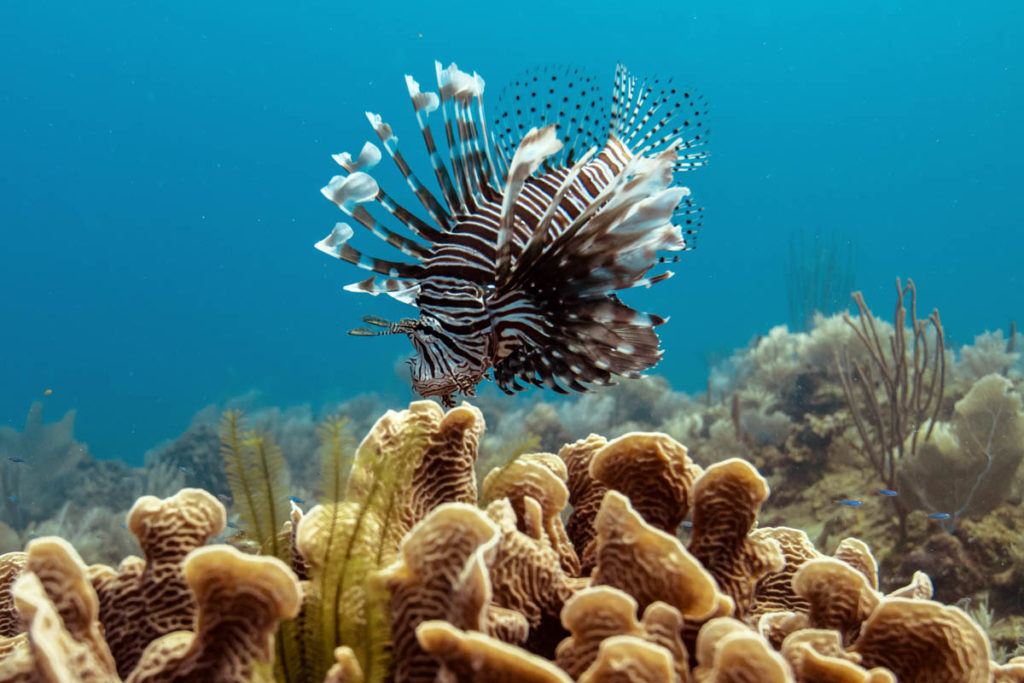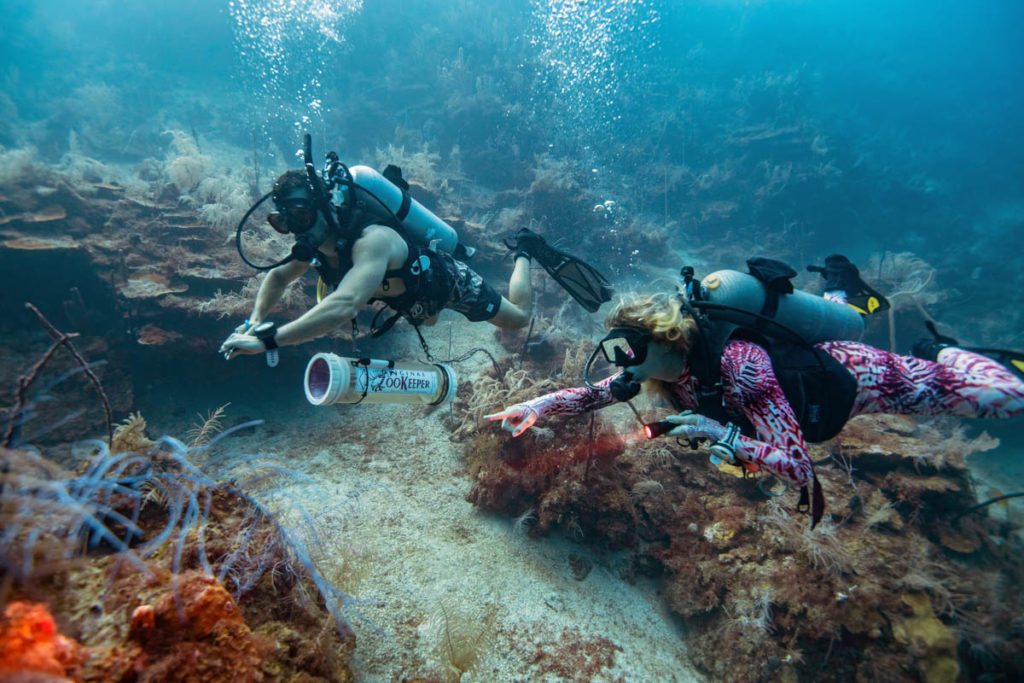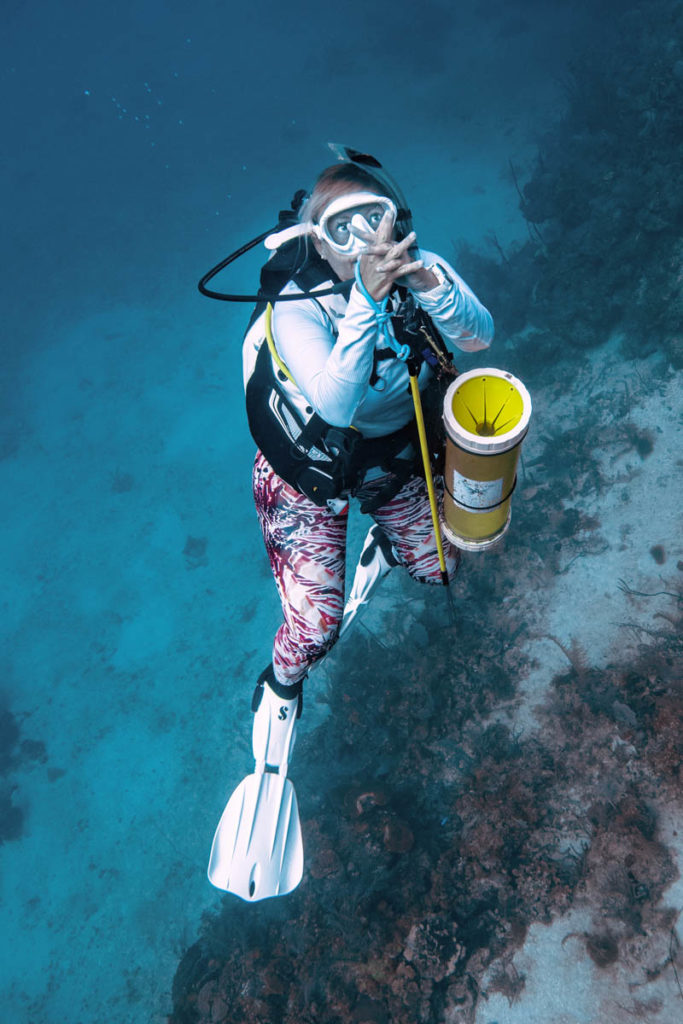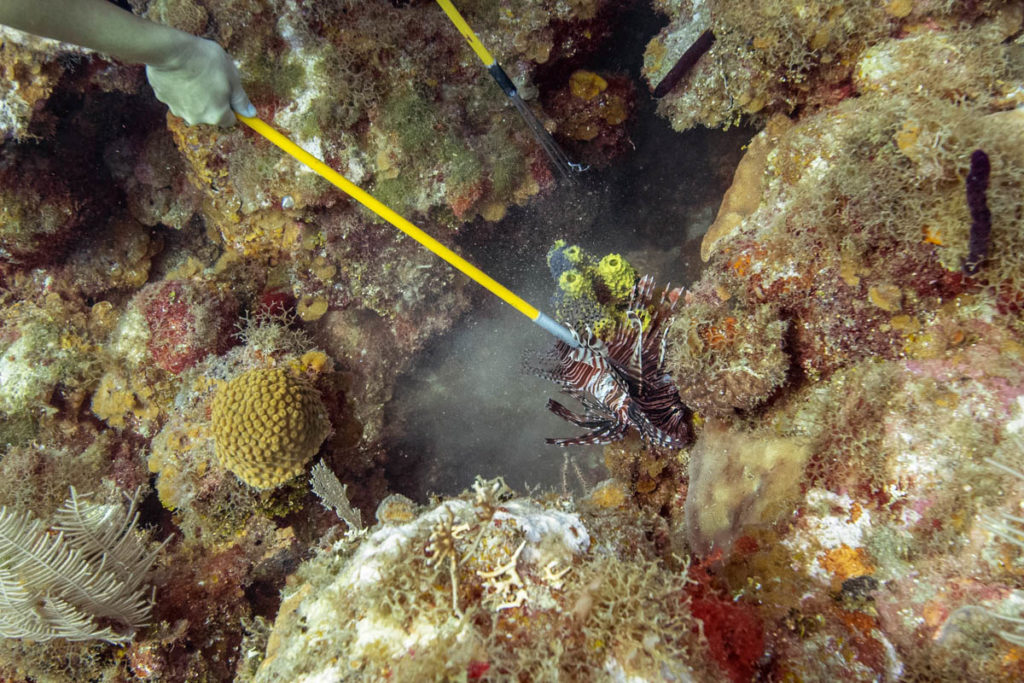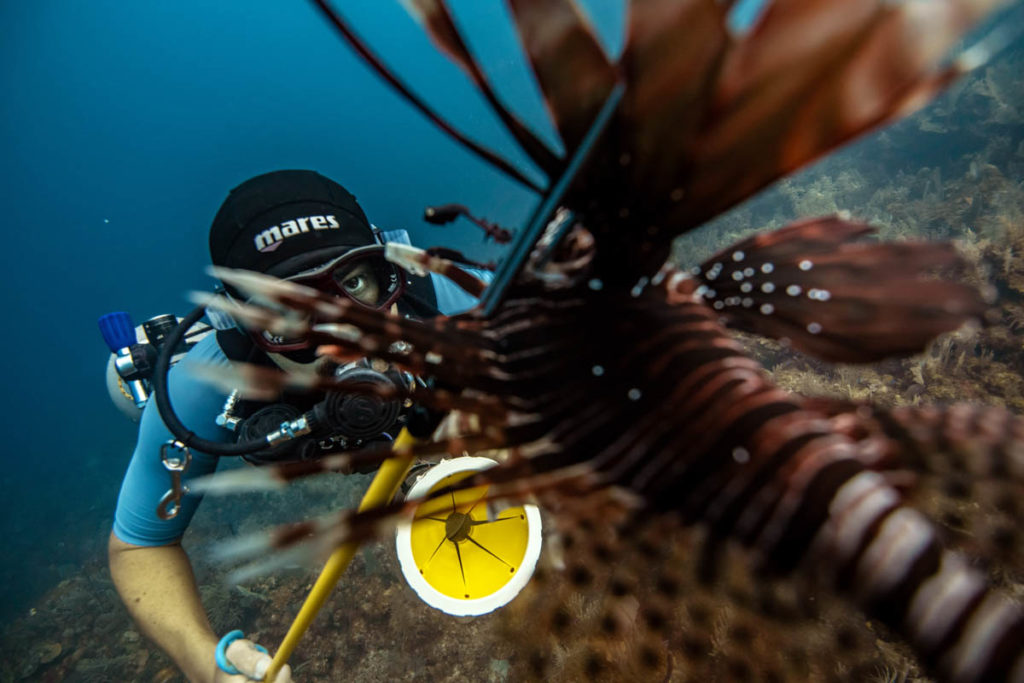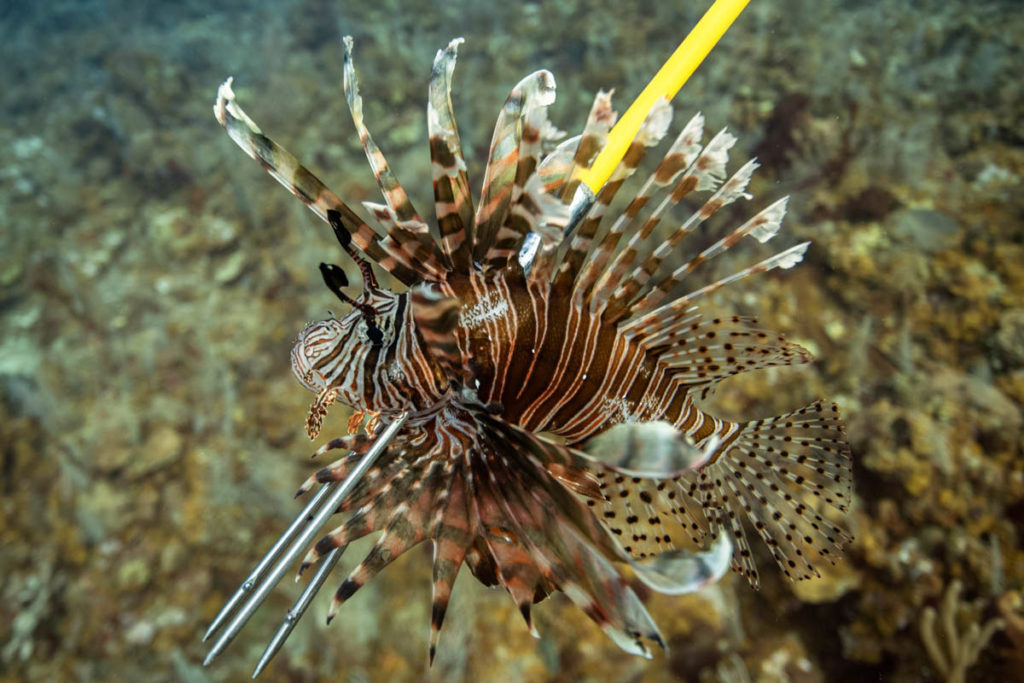Lionfish are tantalizing. With their contrasting stripes, beautiful fanlike fins and spines, if you have ever come across one in person, it is hard to take your eyes off of it. As majestic as these ocean fish are, seeing them in the wild of the Atlantic and Caribbean, is not a good thing. They began invading the waters of the Northwest Atlantic in 1985 and have now become a full blown invasive species in the North and South Western Atlantic Ocean, Gulf of Mexico, Caribbean Sea and as of recent, the Mediterranean Sea. Raising awareness and implementing proactive measures, are the main keys to combating the lionfish invasion.
Native to the tropical waters of the South Pacific and Indian Oceans, the first question many people ask is, “How did lionfish get to the Northwest Atlantic in the first place?” The answer, unsurprisingly, is humans. A very popular aquarium fish, people began importing lionfish to the United States in the early 1980s. Some were undoubtedly released from unwanted home aquariums… and in 1992, Hurricane Andrew destroyed a large aquarium filled with lionfish in Florida’s Biscayne Bay, which further added to the rapidly increasing population.
With no known predators, lionfish have become top of the food chain throughout three major coral reef systems. In addition, they reproduce quickly, live long lives, and have ferocious appetites. A perfect storm for an invasion.
If it was not for the awareness that has been raised over the past couple decades, and thousands of divers hunting and removing lionfish from Atlantic waters on a daily basis, these fish would completely overrun coral reefs and decimate countless species of fish populations.
Ocean advocates and divers, both citizen and scientific alike, have been teaming up and working together through dive shops, organizations, and even apparel companies to raise awareness and provide individuals the resources and knowledge they need to actively help.
Waterlust, an ocean advocate apparel company, and the Reef Environmental Education Foundation (REEF), an international marine conservation organization, began a relationship when Waterlust released a lionfish print collection. Ten percent of all profits from any purchase of Waterlust’s lionfish print leggings, sun suit, top, boardshorts or headband goes directly to REEF.
REEF”s partnership with Waterlust embodies our mission to protect biodiversity and ocean life by engaging and inspiring the public. We are proud to be part of Waterlust’s advocate apparel family, and are excited to continue working together to advance awareness and understanding of invasive lionfish and other marine con-servation initiatives,” said Dr. Alli Candelmo, REEF’s Conservation Science Manager.
With how naturally tantalizing and beautiful lionfish are, it took a lot of work for Waterlust to turn a fish’s pattern and body into a printed fabric that would attract questions and breed awareness.
“Designing a new print usually takes us about a year. We”ve been excited about this print for a very long time, we think it strikes a really good balance between really strong storytelling and very visually appealing,” said Waterlust Chief Product Officer, Laura Graham.
REEF uses the donations from Waterlust to help fund their lionfish derbies, lionfish jewelry making workshops, and collecting and handling workshops.
Invasive lionfish have done an incredible amount of harm to our local marine ecosystems in Florida and the Caribbean. Educating the general public and empowering people to target this species as a food source is an important strategy in turning the tide, and nobody does this better than the team at REEF. We’re honored to be supporting their work and sharing their expertise and wisdom far and wide,” said Patrick Rynne, CEO of Waterlust.
The most effective way in managing the lionfish invasion, is for humans to hunt and eat them. If there is a food demand for lionfish, more fishermen and divers will be inspired to catch them. Luckily, lionfish are a delicate, white, mild-tasting fish, causing the necessary spark in their demand as food.
REEF began hosting lionfish derbies in 2009. In total, the derbies have successfully removed 28,050 lionfish from Atlantic waters.
Of the thousands of lionfish that are caught every year, most are eaten by the hunters or sold to fish markets and restaurants. REEF derbies end with volunteers filleting and cooking all the fish. The public is invited to enjoy the lionfish tastings at no cost.
To catch and handle lionfish safely, takes a bit of training and good dive buoyancy skills. Although their spines are beautiful, they are also venomous.
Getting stung by a lionfish is not deadly, but very painful. It is extremely important to have proper training before hunting.
If REEF training is not available in your location, dive shops are also on the frontlines and a perfect gateway for awareness and training.
PADI Course Director, Josiah Mackin, of Utila Dive Center in Utila, Honduras, created his own PADI specialty course, the Lionfish Containment Course. In this two-day course, divers learn not only how to properly handle and use lionfish containment equipment, but also to hunt safely. Making sure they are checking for their own safety as well as protecting the corals and other marine life while hunting. The last thing anyone would want, would be to accidentally shoot a 400-year-old barrel sponge trying to spear one lionfish.
Obviously getting rid of the lionfish is helpful, it is definitely really good for the reef, and they taste great. It is a fun activity people enjoy. But if people didn’t take the course, if they just went out hunting lionfish, I fear they would do a lot of other damage to things,” said Mackin.
Humans may very well be the major cause behind many of Earth’s environmental issues, like the lionfish invasion, but they are in a unique position to also be the solution.
So, go, be the difference, just make sure you do it safely and respectfully.
If there is any hope in containing this invasion, one thing is very clear; the more we work together, the more progress we make. Every lionfish counts.





